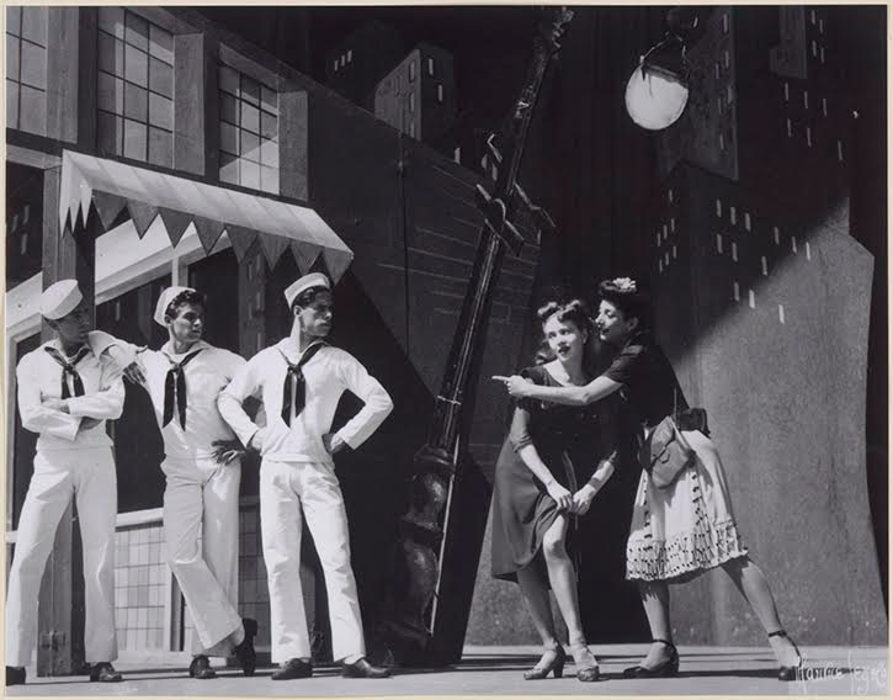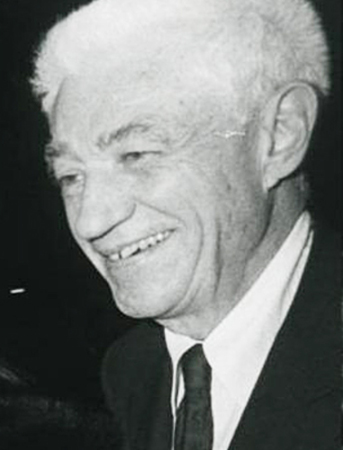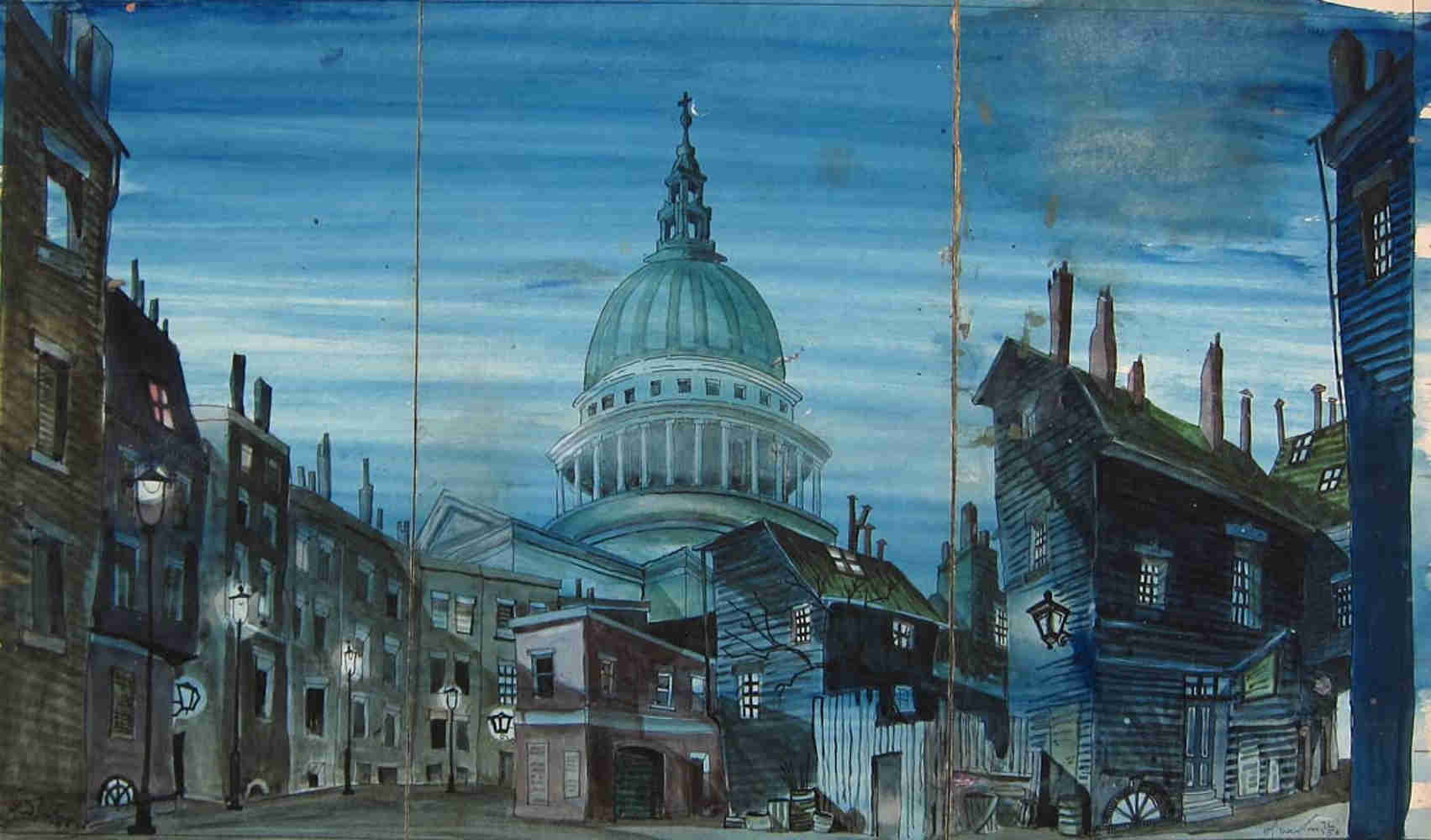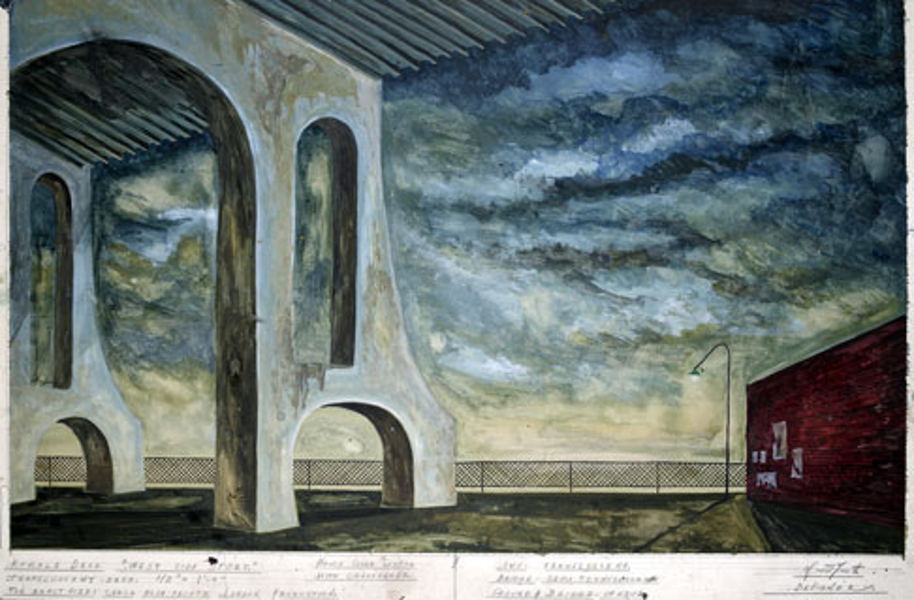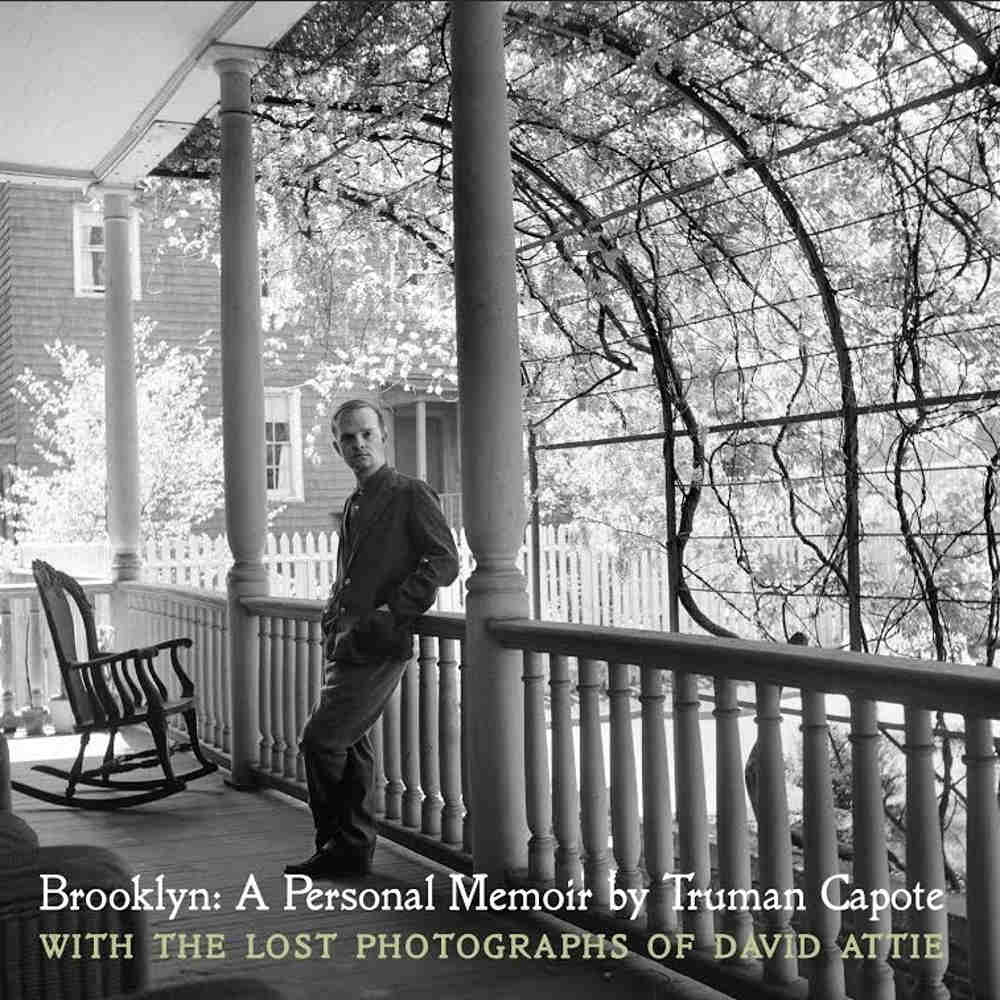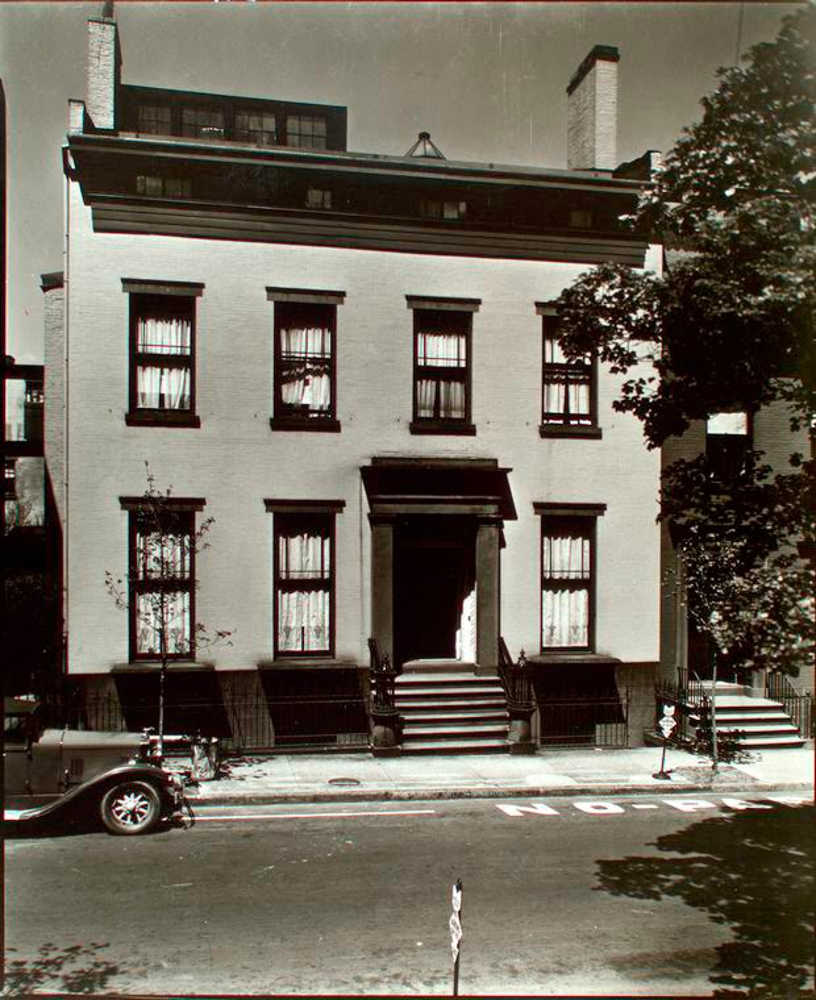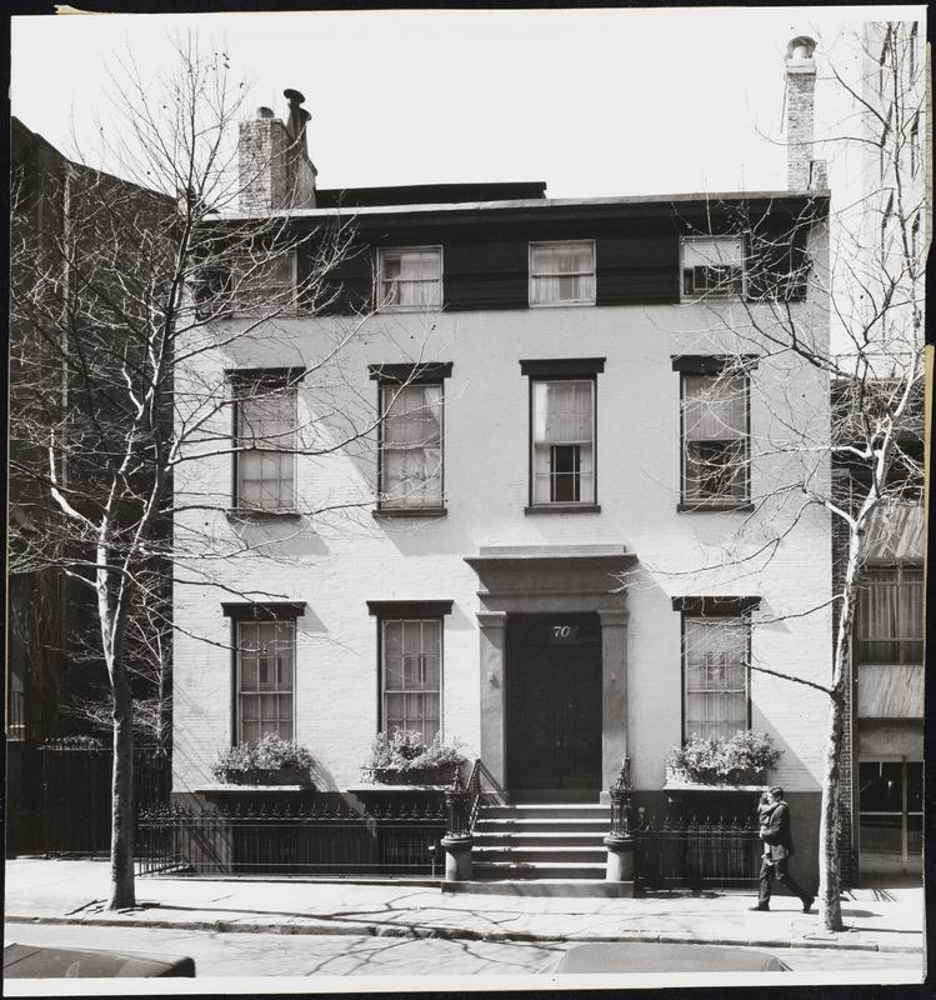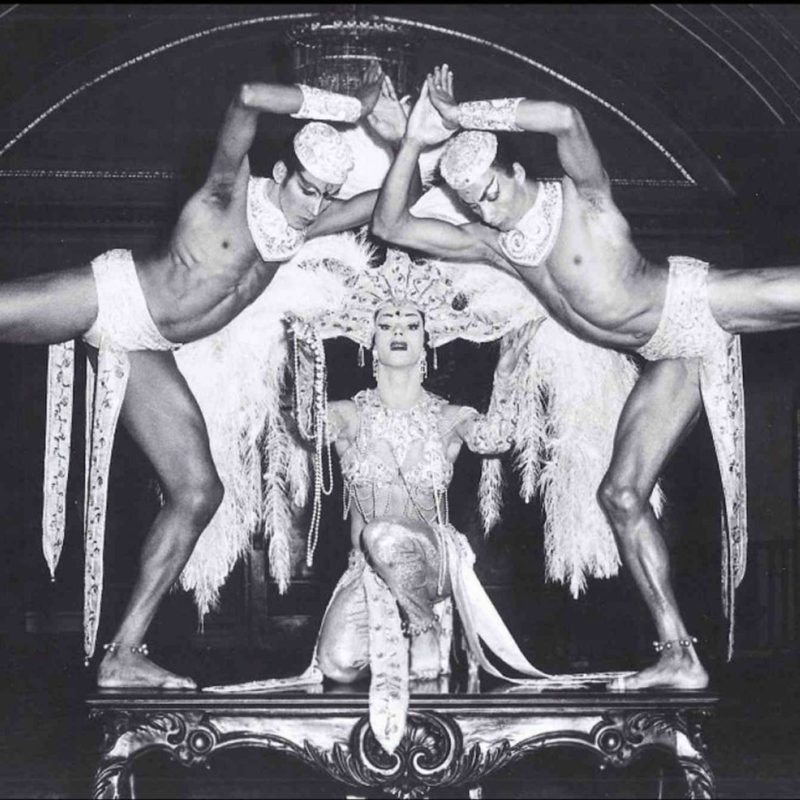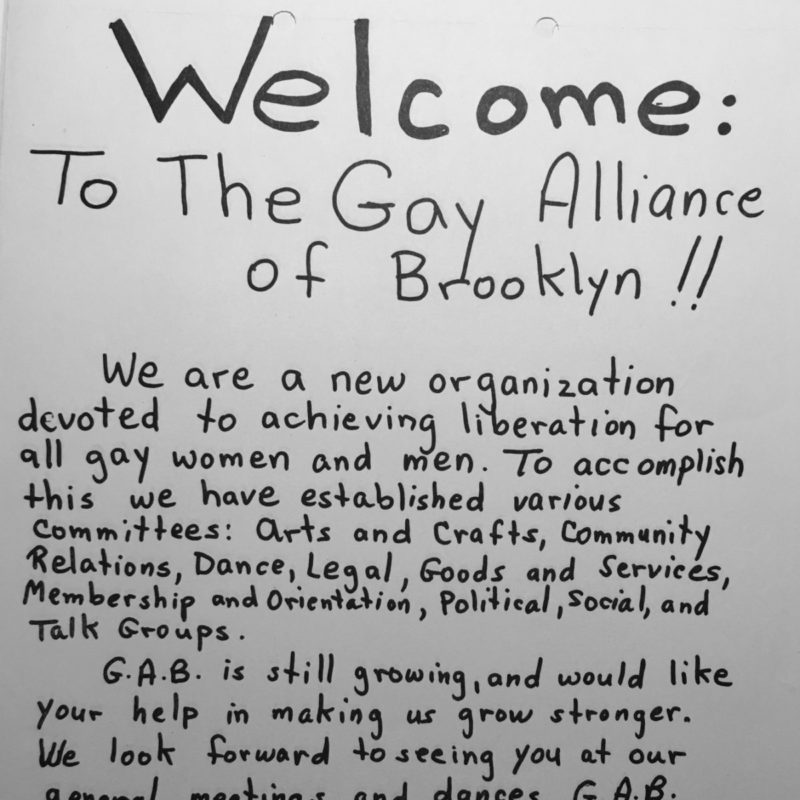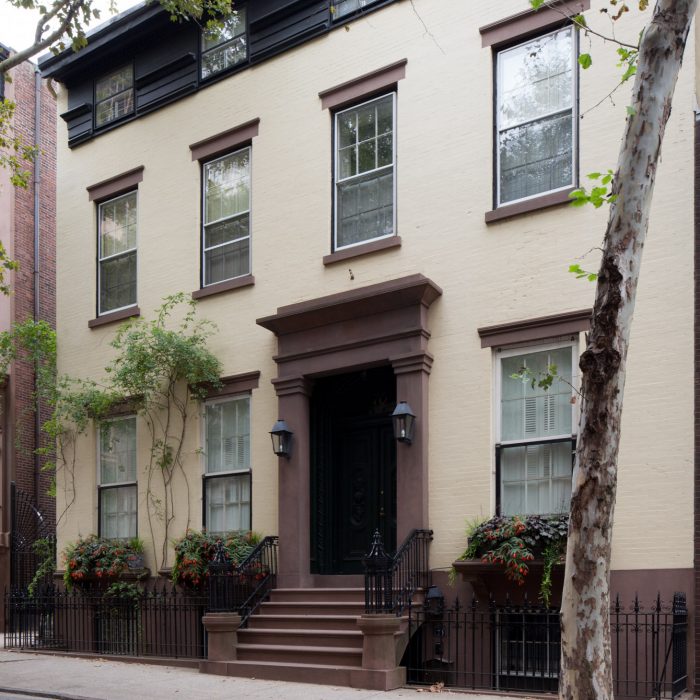
Oliver Smith Residence / Truman Capote Residence
overview
Legendary theater designer Oliver Smith purchased this Brooklyn Heights residence in 1953 and lived here until his death.
From around 1955 to 1965, he rented the garden apartment to Truman Capote, who wrote his best-known works, Breakfast at Tiffany’s and In Cold Blood during this time.
History
Oliver Smith (1918-1994), called “one of the most prolific and imaginative designers in the history of the American theater” by the New York Times was also a co-director of the American Ballet Theater. A 25-time Tony Award nominee, he created the original sets for such Broadway shows as My Fair Lady (1956), Auntie Mame (1956), Brigadoon (1957 revival), West Side Story (1957), Camelot (1960), and Hello Dolly! (1964) and such ballets as Rodeo (1942), Fancy Free (1944) and Fall River Legend (1948).
Smith purchased this Brooklyn Heights residence in 1953. He was associated with a prominent group of gay writers, artists, and intellectuals, and perhaps influenced by his time at February House (a noted gay commune that once stood at 7 Middagh Street, since demolished), he established his own home as a center of gay culture in Brooklyn. Smith’s studio was in the attic.
From around 1955 to 1965, he rented the garden apartment to Truman Capote (1924-1984). In 1959, Capote published an essay called “A House on the Heights” about his stay here, that opened with the lines “I live in Brooklyn. By choice.” During these years, he wrote his best-known works, Breakfast at Tiffany’s (1958) and In Cold Blood (1966).
Entry by Jay Shockley, project director (March 2017).
NOTE: Names above in bold indicate LGBT people.
Building Information
- Architect or Builder: Unknown
- Year Built: 1839
Sources
Christopher D. Brazee, Gale Harris, and Jay Shockley, “Gay Pride Month 2013,” New York City Landmarks Preservation Commission (June 2013).
Jack Anderson, “Oliver Smith, Set Designer, Dead at 75,” The New York Times, Jan. 25, 1994, B9.
Joshua Barone, “A Son’s Sleuthing, A Father’s Archive and a Lost Brooklyn,” The New York Times, July 22, 2016, C21.
Do you have more information about this site?
This project is enriched by your participation! Do you have your own images of this site? Or a story to share? Would you like to suggest a different historic site?
